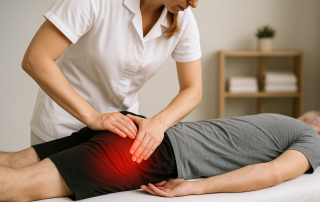Introduction: Back pain, a common ailment affecting a significant portion of the population, often leads individuals to seek various treatment methods. Among these, dry needling has emerged as a promising approach. This technique, though sometimes confused with acupuncture, stands distinct in its methodology and underlying philosophy.
Understanding Dry Needling: Dry needling, fundamentally different from acupuncture, is rooted in modern Western medicine principles. It involves the insertion of thin needles into the myofascial trigger points – taut, painful points in the muscle tissue. These trigger points are often the source of musculoskeletal pain, including chronic back pain.
Physiotherapy and Dry Needling: Physiotherapists frequently incorporate dry needling into comprehensive treatment plans for back pain. This practice not only targets muscle tension relief but also aids in improving range of motion and enhancing muscle function. It’s particularly effective in cases of chronic back pain, where traditional therapies might have limited success.
Mechanism of Intramuscular Stimulation: Dry needling operates on the principle of intramuscular stimulation. By inserting needles into affected muscles, it may elicit a twitch response, which can lead to the relaxation of the muscle fiber. This process helps in reducing muscle tension and alleviating pain.
Trigger Point Therapy: As a form of trigger point therapy, dry needling specifically targets areas of the muscle where pain is most intense. These trigger points can refer pain to other areas, contributing to the complexity of back pain. By deactivating these points, dry needling can provide significant pain relief.
Chronic Back Pain Management: For those suffering from chronic back pain, dry needling presents a viable option. It’s particularly beneficial for patients who haven’t found relief through conventional treatments. By directly addressing muscle tension and trigger points, it can lead to a noticeable reduction in pain and discomfort.
Rehabilitation and Recovery: In the realm of rehabilitation, dry needling accelerates the recovery process. It’s often integrated into rehabilitation programs to aid in the recovery from back injuries or surgeries, helping patients return to their normal activities more quickly.
A Holistic Approach: Dry needling is sometimes viewed as a part of a holistic treatment approach. By addressing the interconnectedness of the body’s systems, it not only alleviates pain but also promotes overall well-being.
Conclusion: Dry needling offers a unique and effective approach to managing back pain, particularly when integrated into a comprehensive physiotherapy plan. By understanding its role and application, patients suffering from chronic back pain can find a new avenue for relief and recovery. As always, it’s crucial to consult with healthcare professionals to determine the most appropriate treatment for individual needs.




